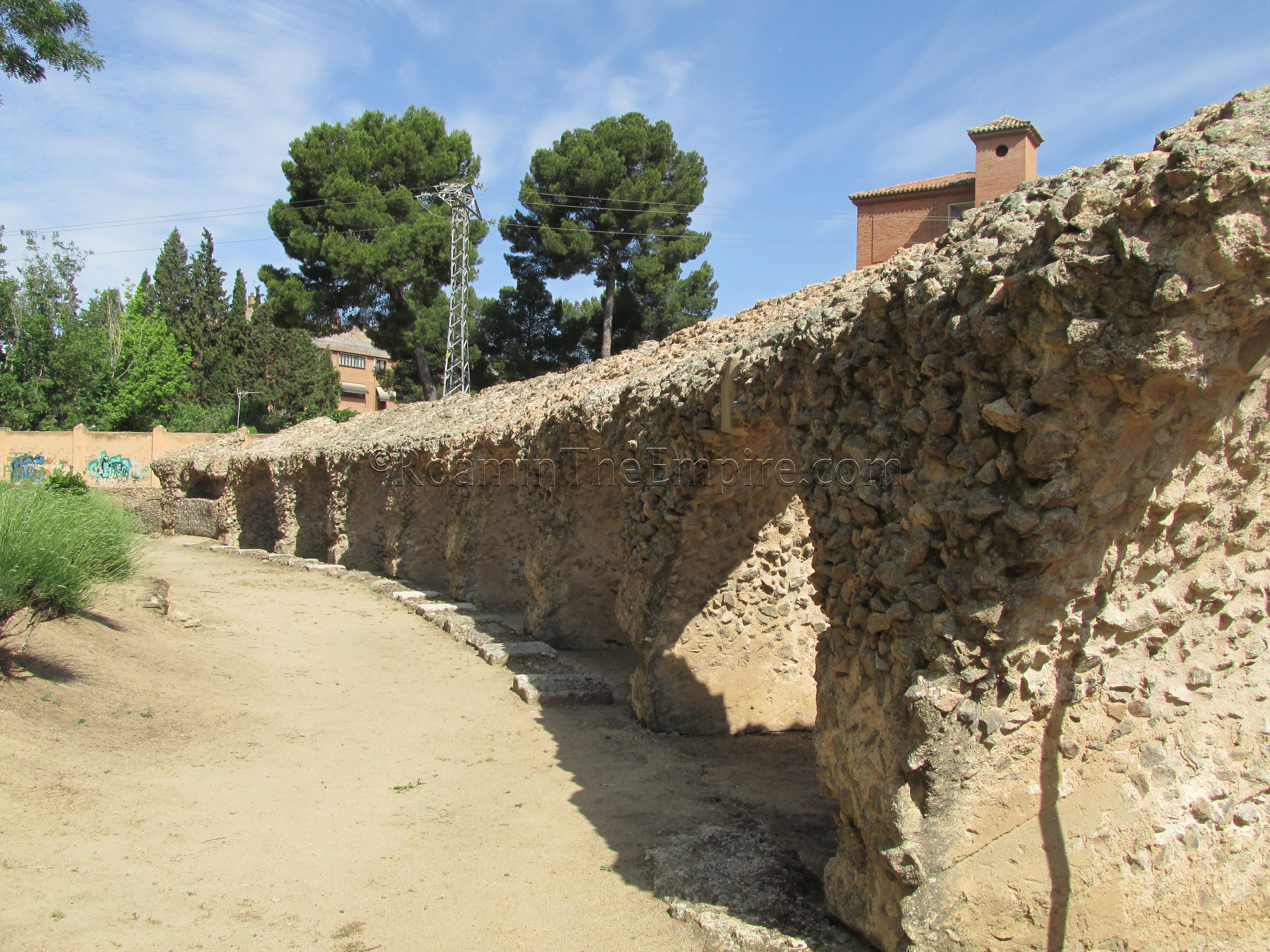
Most Recent Visit: June 2016
Quick Info:
Address:
Termas Romanas
Plaza Amador de los Ríos, 3
45001 Toledo
Hours:
Tuesday-Saturday 10:00-14:00, 16:00-20:00
Sunday 10:00-14:00
Monday Closed
Admission: Free
Address:
Cuevas de Hércules
Callejón San Ginés, 3
45001 Toledo
Hours:
Tuesday-Saturday 12:00-14:00, 17:00-19:00
Sunday,Monday Closed
Admission: Free
Despite becoming an important city starting in late antiquity, and remaining so for at least a thousand years after, not much seems to be known about the origins of modern-day Toledo, Spain. Perched on a hill that is surrounded on three sides by the Tagus River (now the Río Tajo), the defensible location of the modern town was, unsurprisingly, occupied by a pre-Roman settlement of the Celtiberian Carpetani tribe. This oppidum may have been called Tole, though almost nothing seems to remain of the pre-Roman settlement. In the lead up to the Second Punic war, the Carpetani fought against the expansion of Carthaginian influence in the region, but were defeated along with several other local tribes by Hannibal in 219 BCE. Not long after, in 193 BCE, the town was captured by the praetor Marcus Fulvius Nobilior (who was later consul in 189 BCE) after a pitched battle near the town between the Romans and an army composed of the Vaccaei, Vettones, and other Celtiberians. The king, Hilernus, was captured after the Romans routed the local tribes.
Following its capture by the Romans, Toletum became a civitas stipendaria, but doesn’t feature in the historical record for the rest of the Roman period of occupation. It is likely that the settlement gained municipium at some point during the Flavian Dynasty, as that is when many of the larger building projects in Toletum seem to have started. Inscriptions appear to indicate some sort of client relationship between Pompey and the city, perhaps the reason the settlement did not gain municipium during the Augustan period
Getting There: Toledo is easily reachable by bus or train from Madrid. The bus takes about an hour to an hour and a half and leave from the Plaza Eliptica bus station in the southern part of the city (accessible via the 6 and 11 metro lines). The trip is about 5.40 Euro each way, and buses leave every half hour between 6:00 and 23:00. The precise schedule can be found here. The train to Toledo, meanwhile, takes 33 minutes and leaves from Atocha station. The trip is 12.90 Euro each and leaves once an hour, though not at the same time every hour, so checking the schedule on the Renfe website is necessary. Both the bus and train service have similar frequency returning to Madrid from Toledo. Neither the bus nor the train arrive especially close to the city center of Toledo; the buses arrive closer to the Roman circus remains, while the trains arrive closer to the Roman bridge and aqueduct remains. Despite being the bus being less than half the price of the train, I opted for the train for a couple of reasons. First, the trip was at least half the time. Second, there wasn’t as much potential for delay; the train would not get caught up in traffic. But, perhaps most importantly, the train station allowed for a more scenic approach to the city in the morning. I also thought it would be better to see the bridge and the aqueduct earlier in the day, as there is no shade, whereas the circus is in a park with plenty of tree cover. One additional piece of advice is that the trains returning to Madrid in the afternoon during the summer can get booked up, so plan in advance for that. I didn’t know how long I would spend in Toledo, so I figured it wouldn’t be much of an issue to just buy my ticket back whenever I wanted (I’ve very rarely ran into a problem with that strategy), but I ended up not being able to book on the next train, and instead had to wait another hour for the following train.
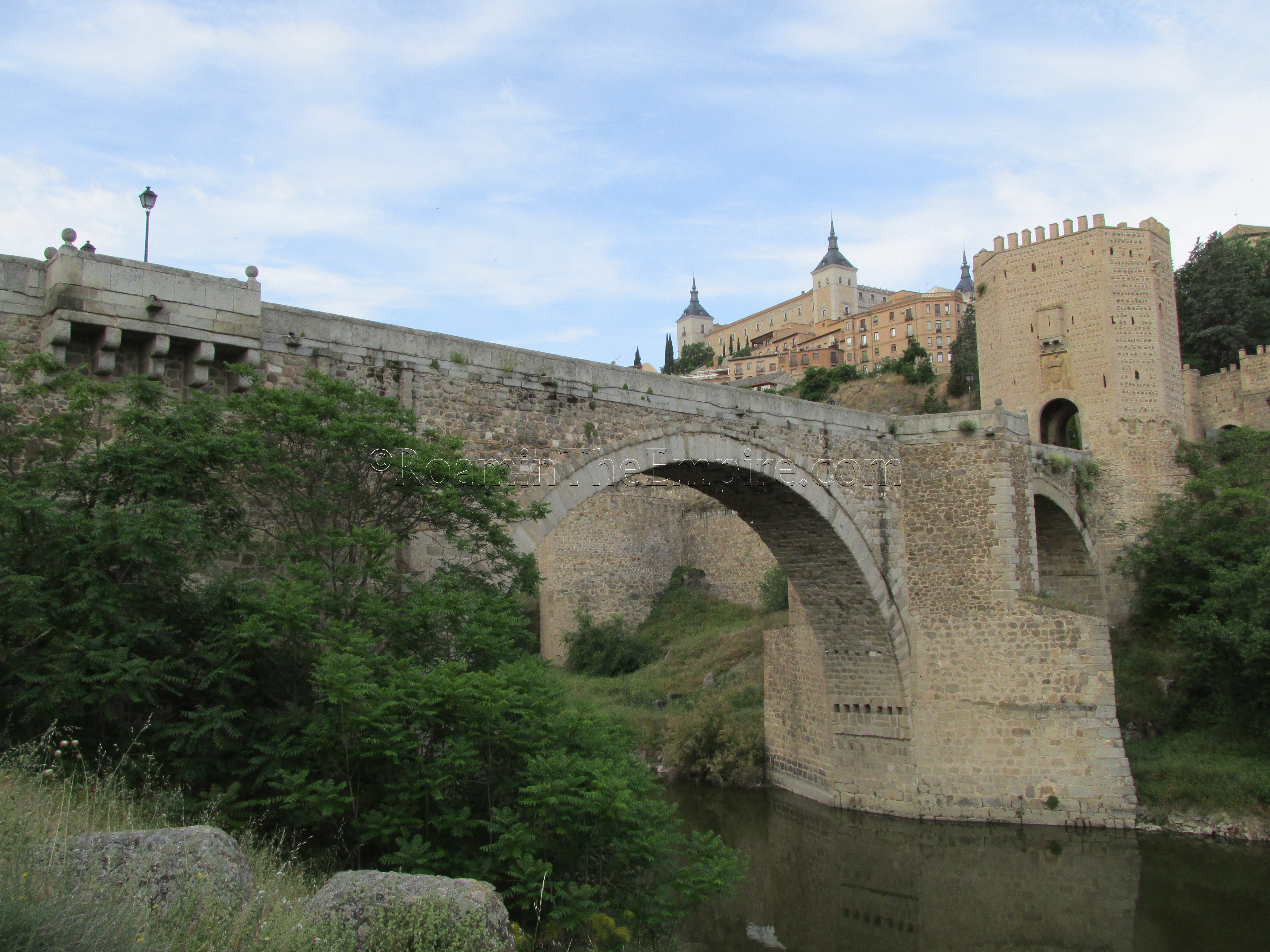
Just a few minutes from the Toledo train station is the Puente de Alcántara. Exiting the train station, head immediately right (west) to the street running in front of the train station (Paseo de la Rosa). Continue taking that street northwest until reaching a large roundabout and take the immediate left exit, which is a continuation of Paseo de la Rosa. Following that street around will lead directly to the bridge, the middle of three bridges crossing the Targus in that area, and the sole pedestrian only bridge of the three. The exact construction date of the bridge is unclear, but it probably dates to around the foundation of Toletum. The two large gate structures at either end of the bridge are later constructions, and the bridge has likely undergone extensive renovation and reconstruction since its original construction.
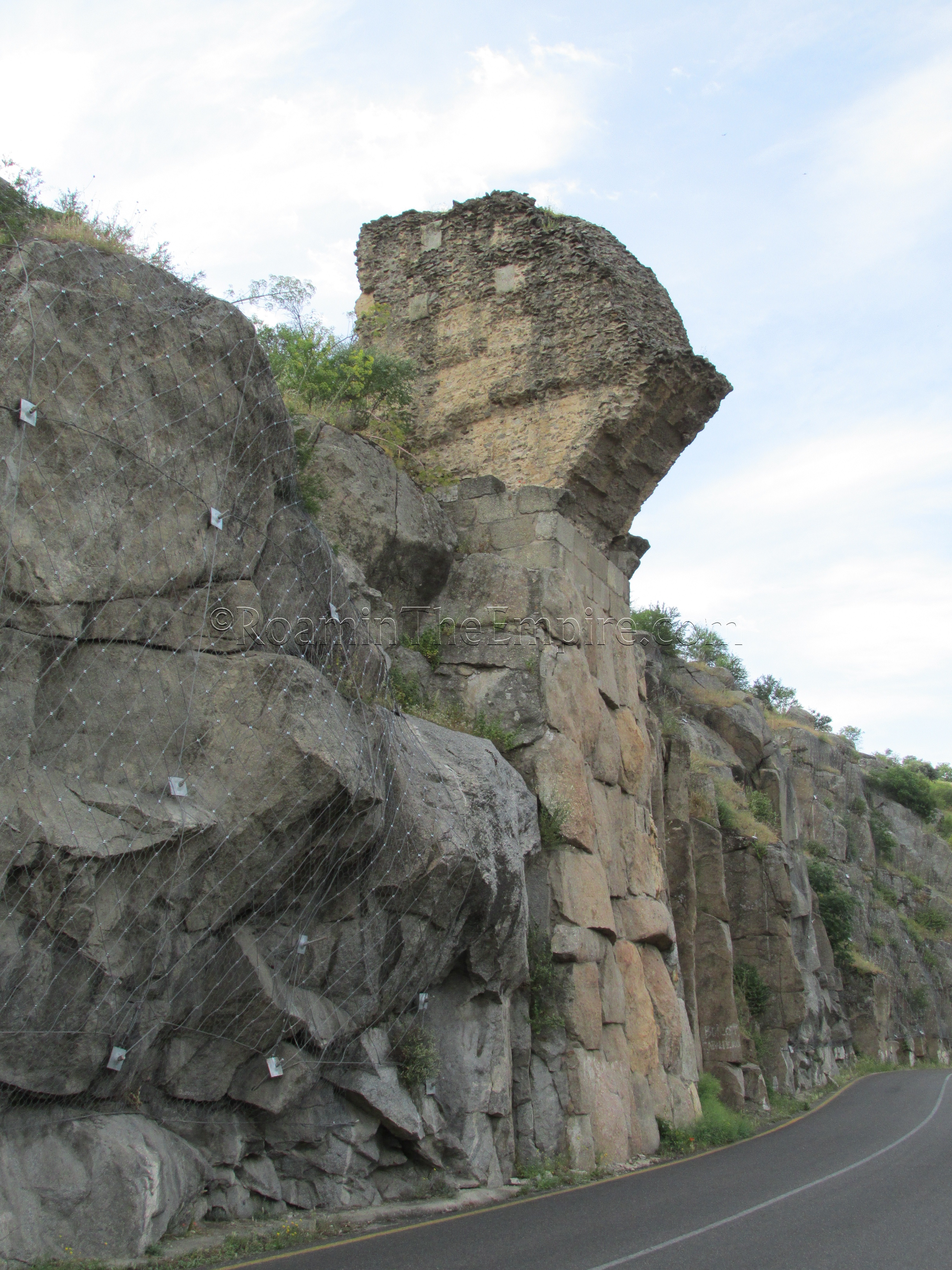
Continuing south along the Targus River, just past the next bridge (Puente Nuevo), on either side of the river are the remains of aqueduct piers. On the east side of the river, one pier with a very small fragment of arch is visible nearly overhanging the road. A second, more robust pier is located just below the road near the edge of the water. Looking across the river, two more pier fragments can be seen at essentially equitable heights to the two on the east side; both are below the elevation of the road that runs along that side of the river, though. The aqueduct is estimated to have crossed over the Targus at a height of about 40 meters after running for about 38 kilometers from its source, a tributary of the Targus river about 22 kilometers, as the crow flies, to the south of Toletum.
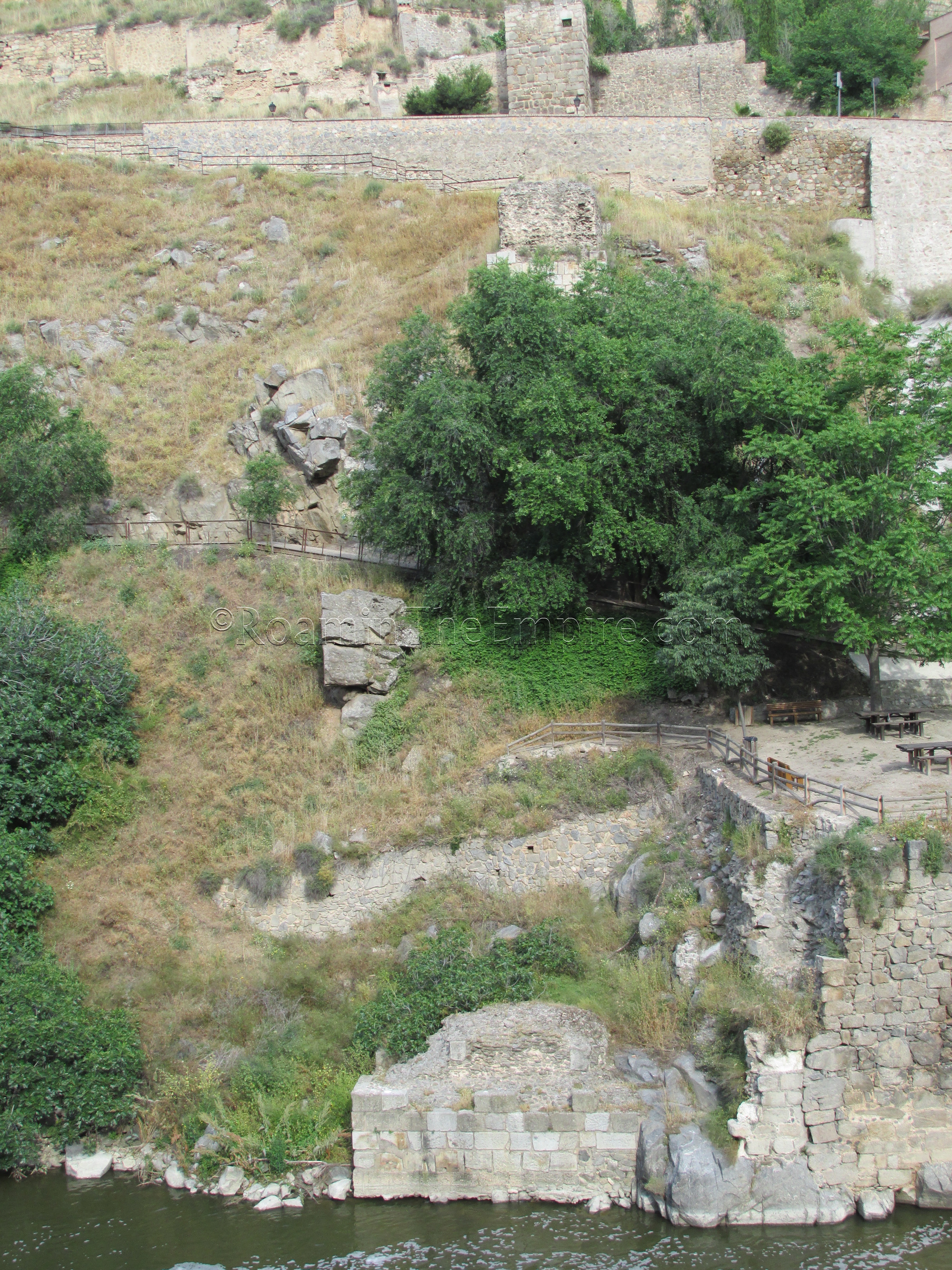
The streets of Toledo are, to put it lightly, labyrinthine. So, in lieu of putting any written directions for the rest of the sites, refer to the map above. Speaking of which, there is a tourist information office in Plaza del Ayuntamiento, in front of the cathedral, at which city maps can be acquired at no charge.
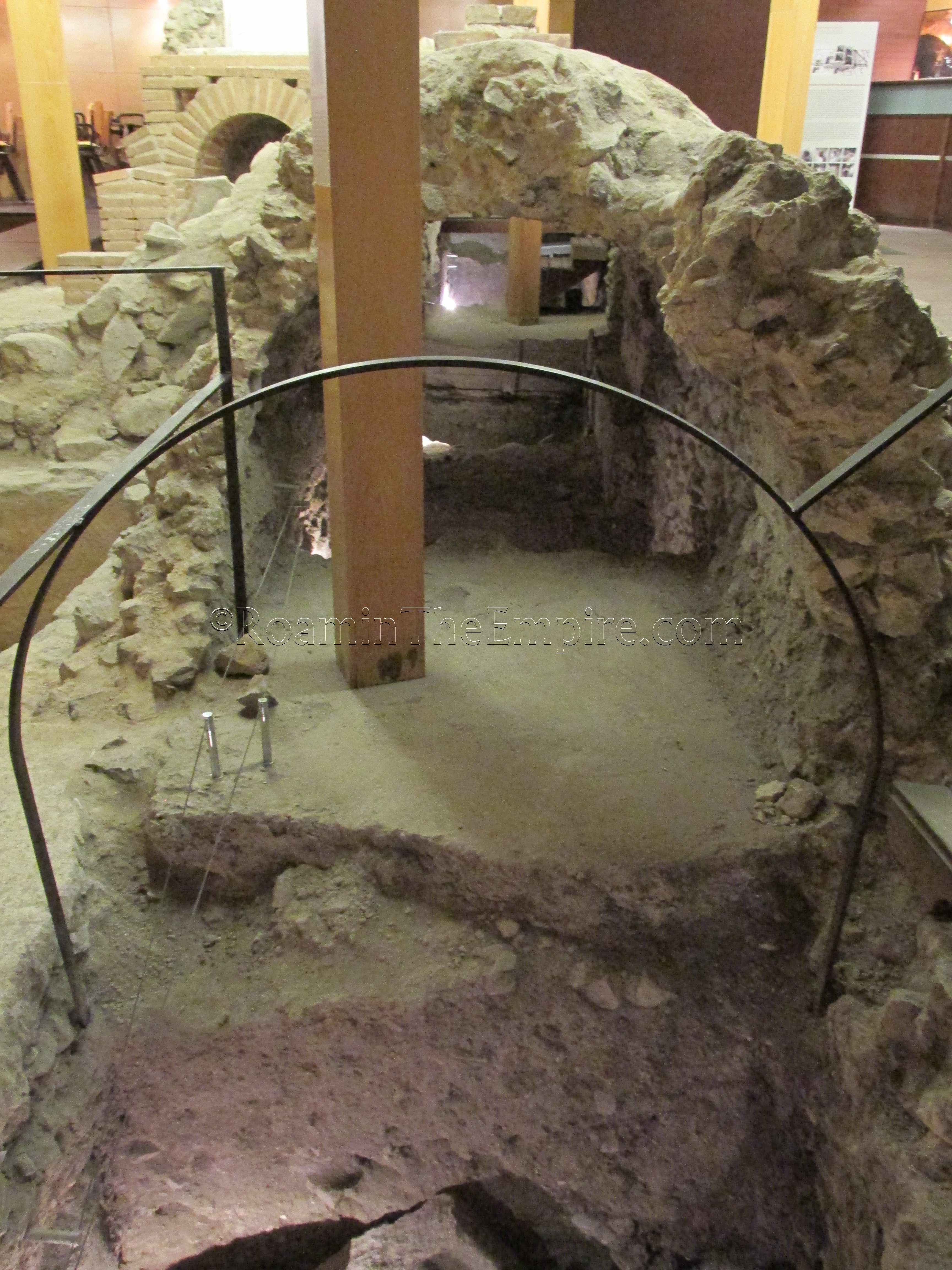
The first thing to see in the center of the city are the Termas Romanas, located at Plaza Amador de los Rios 3. The complex is open from 10:00-14:00 and 16:00-20:00, except on Sundays, when it is only open from 10:00-14:00, and on Mondays, when it is closed. There is no charge for entrance. The complex generally dates from the mid-1st century CE to the 2nd century CE, though there are a few later hydraulic structures present (10th-18th centuries CE).
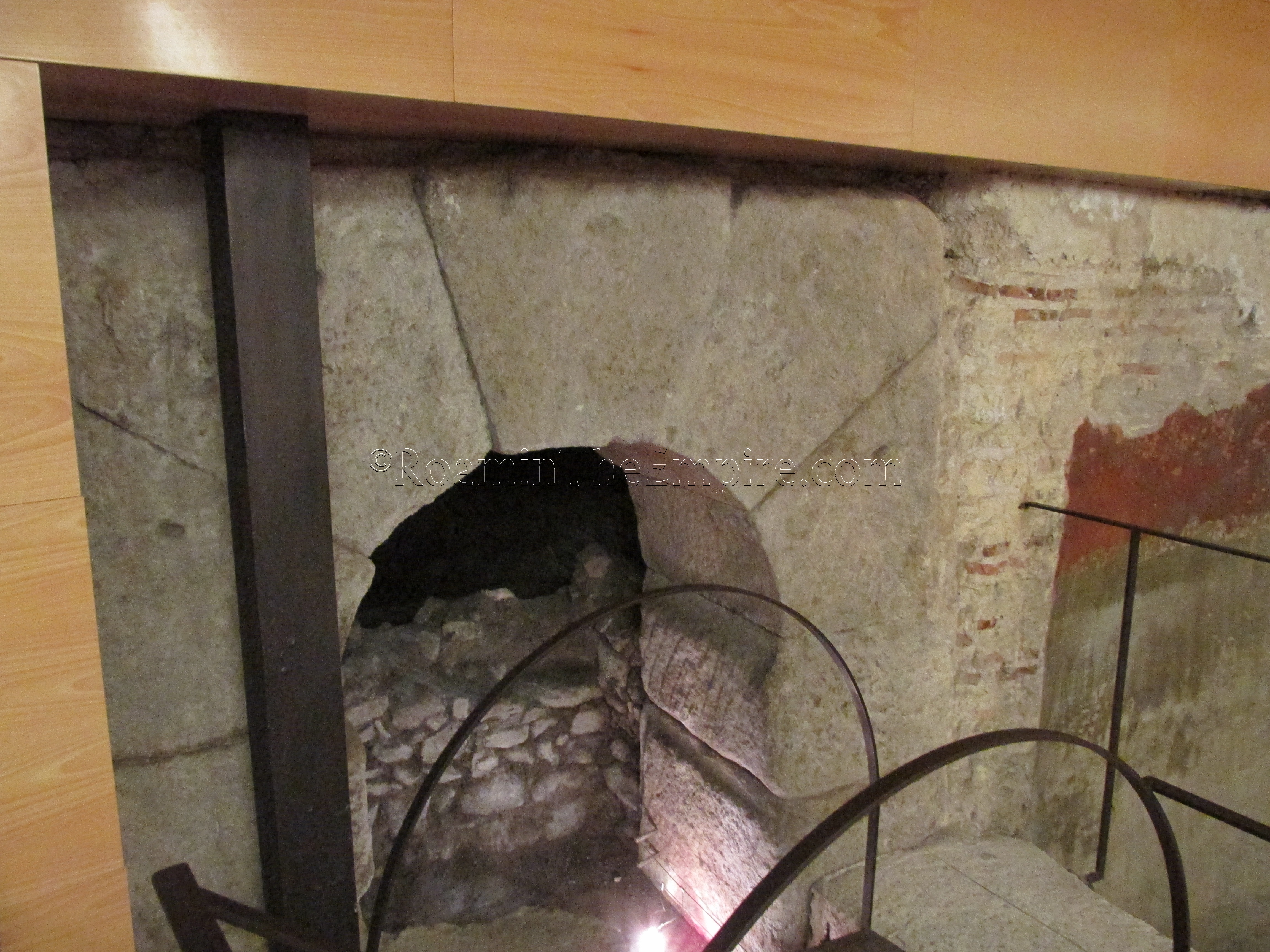
The central structure in the complex is a large channel that runs through nearly the whole length of the site. In particular, there is one structure, referred to as the ‘arch of granite’ that makes up part of this channel with an arch made up of granite blocks, while the rest of the channel is constructed in opus caementicium.
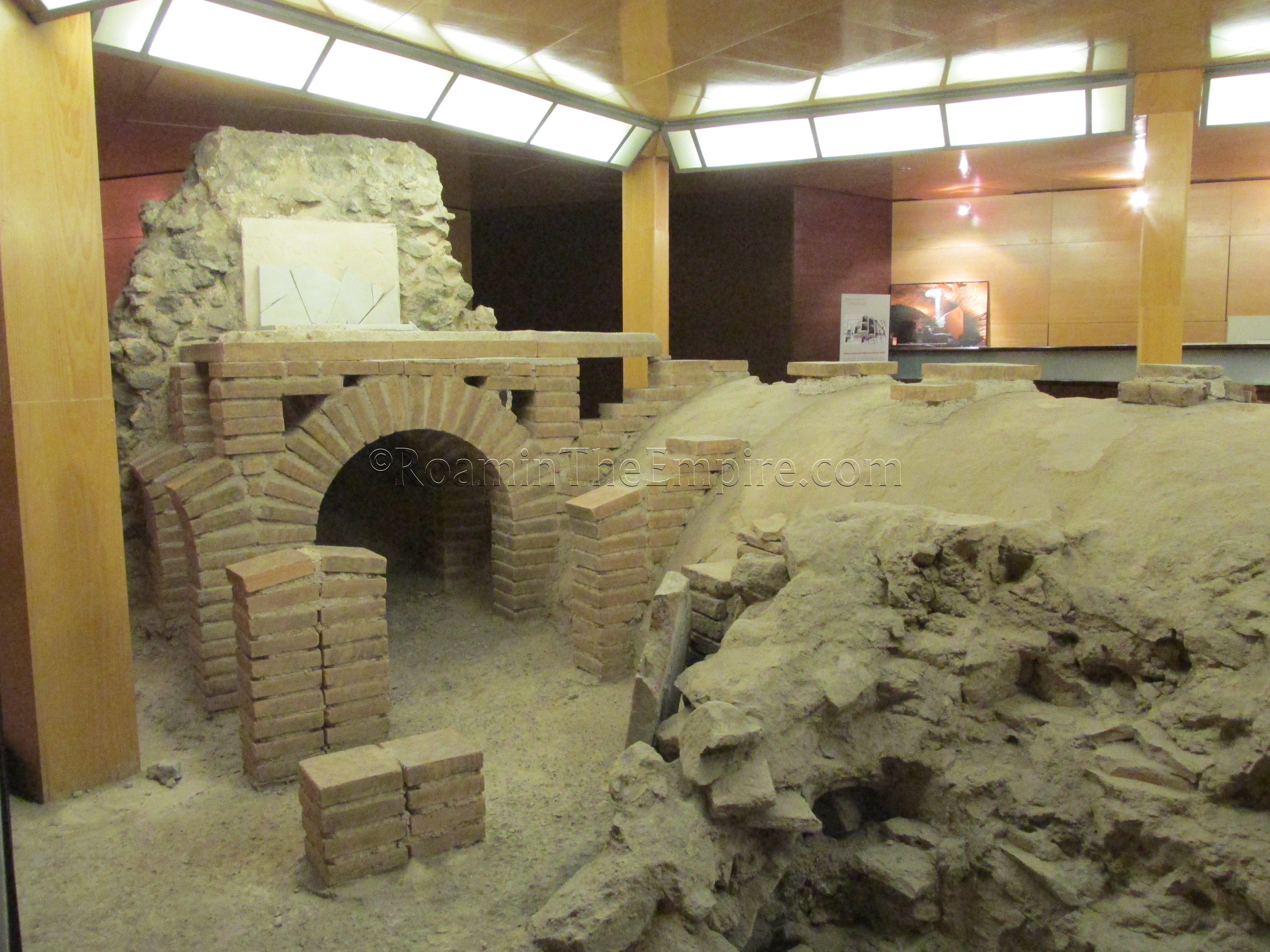
Adjacent to the channel are a series of reconstructed hypocaust arches that were associated with the heated room of a bathing complex. A few other fragments of walls associated with the bathing complex are present, but the signage is not very frequent or helpful. What is there is in Spanish, which is to be expected, but overall it is not comprehensive and leaves something to be desired. I left the site without a very clear understanding of what was going on at this site, and even in hindsight, it is sort of confusing. For instance, there is apparently a fragment of pre-Roman wall, and while the site plan (located upstairs at the entrance) indicates this, there is no signage in the actual remains to show the location.
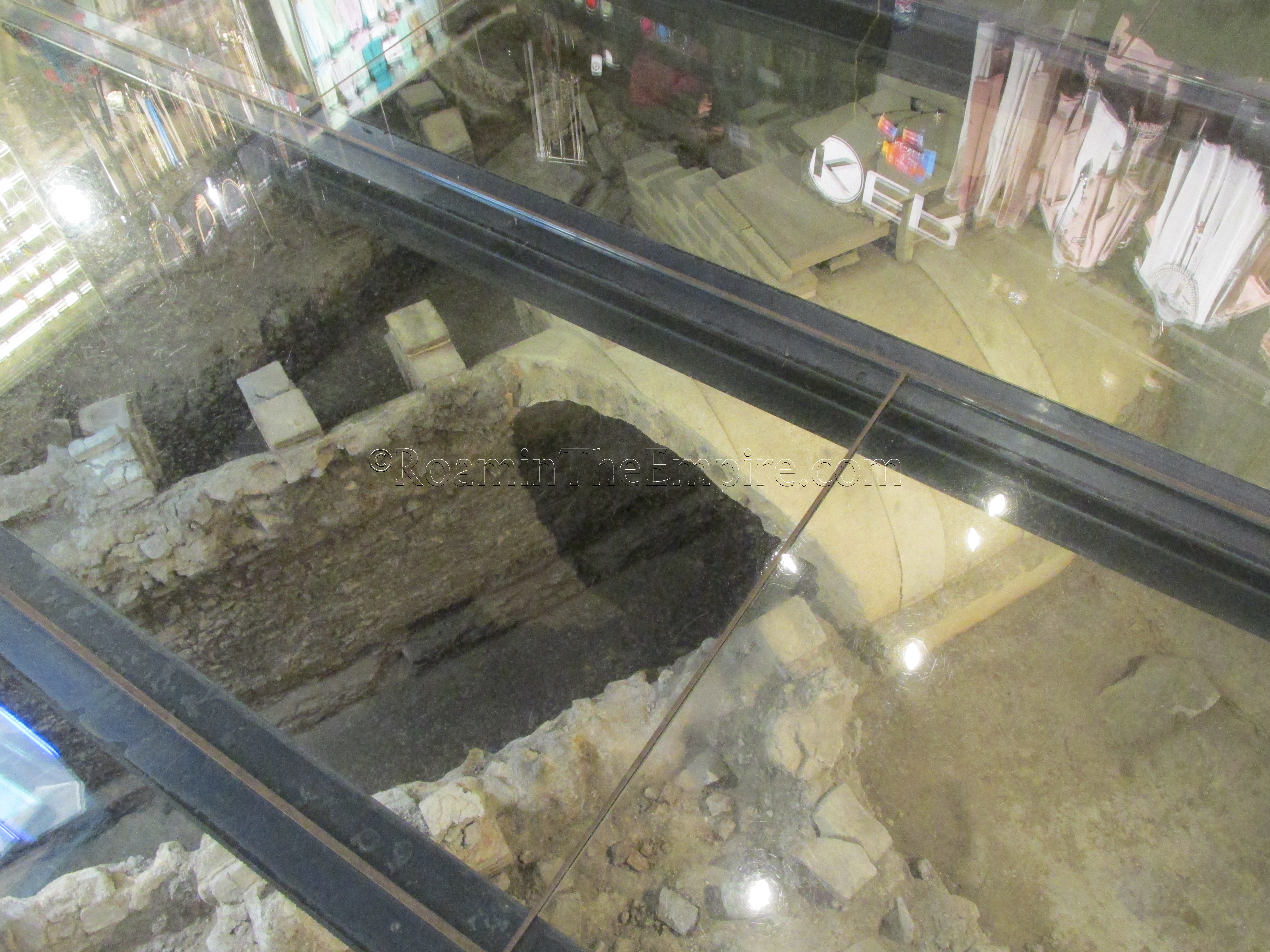
Off the same square in the northwest corner is a store called Legendary Koker. Entering the store, the majority of the floor is see-through and a channel (part of the same channel seen in the Termas Romanas) can be seen running beneath the store. There are other adjacent structures, including hypocaust arches similar to those seen in the Termas Romanas. According to their website, there are other more substantial structures on site, but I presume those are in areas not accessible to customers. Unfortunately the excess of colorful lights reflecting off the floor don’t make for very good viewing conditions, and make for even worse photographing conditions. The store is open Monday to Friday from 10:30 to 20:30, Saturdays from 11:00 to 21:00, and Sundays from 11:30 to 14:30. If the entrance off Plaza Amador de los Rios is not open during those times, there is another entrance on the opposite side of the building on Calle Alfonso X el Sabio. There is a small blurb in English and Spanish on the southern entrance of the store, but it doesn’t really add much more than the general time period and broad context of the remains.
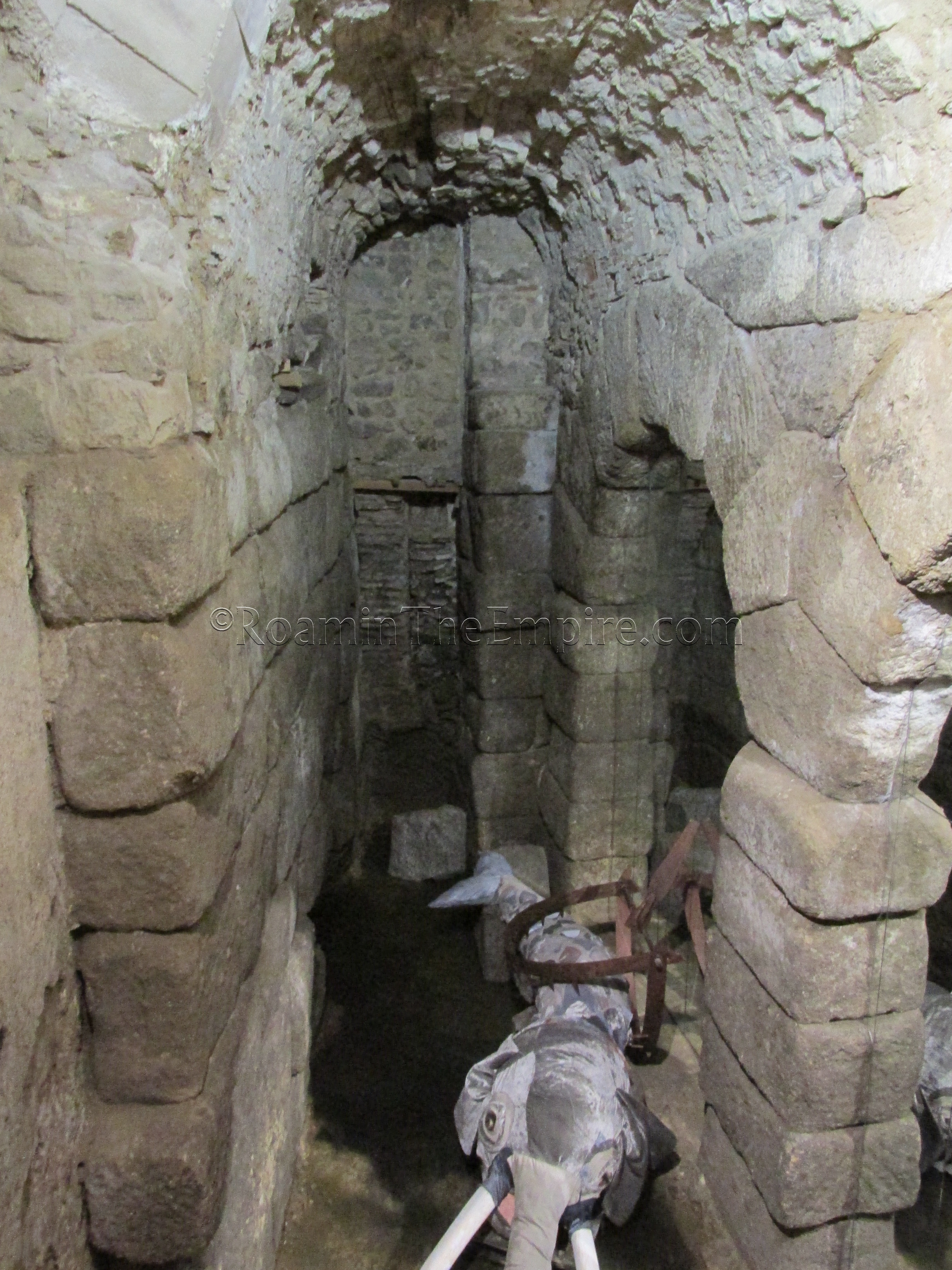
Nearby, at Callejón San Ginés 3, are the so-called Cuevas de Hércules. The Cuevas de Hércules are open Tuesday to Saturday from 12:00 to 14:00 and 17:00 to 19:00. The site is closed on Sunday and Monday, and admission is free. The ‘Caves of Hercules’ are actually a 1st century CE cistern measuring about 6 x 11.5 meters, and about 4 meters in height, though it get their name from later folktales that associated the structure with Hercules; one being that it was a temple dedicated to Hercules. It is believed that the aqueduct coming into the city may have fed directly into this cistern. Some later remains are viewable when entering the building, but the majority of the Roman era cistern is accessible via a staircase down into the cistern. Unfortunately half the cistern is has been blocked off with a mirrored wall, and when I went there was some sort of weird fantastical animal puppet exhibition of some sort that featured very prominently throughout the site. The signage was, again, mostly in Spanish, but was a little more helpful, which is probably partially helped by the fact that it was just a less complex set of remains than the Termas Romanas.
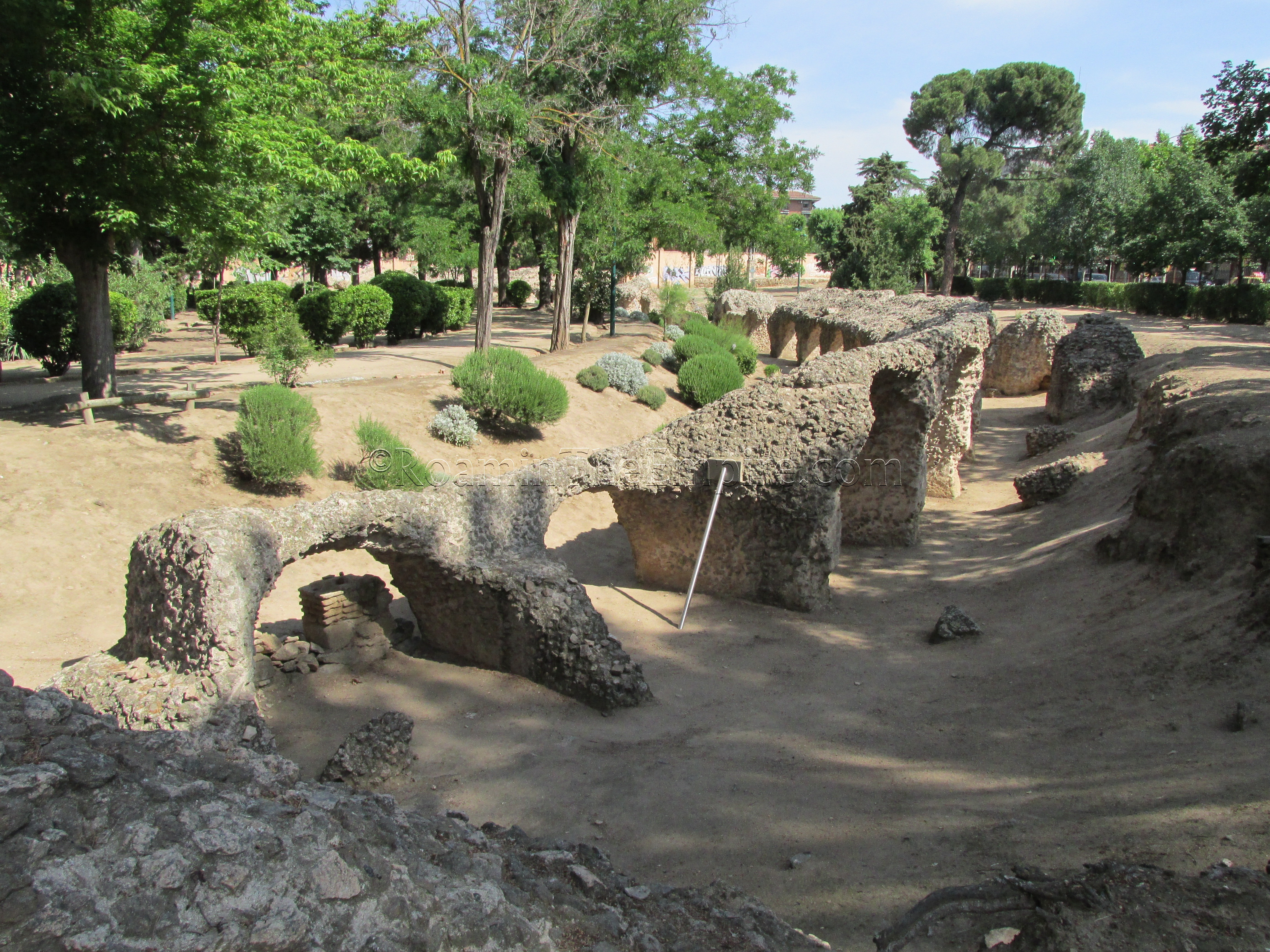
The final vestiges of Toletum that I visited was the remains of the circus. While I had seen the remains of the circus described in largely pejorative terms, I actually thought that it was quite a good set of remains. While it may not be the most well-preserved circus even in Iberia, what does remain essentially preserves about a 200 meter stretch of the rounded side of the circus. Though the northern side of this portion is far more complete (certainly a relative term in this case) than the southern side, it’s still pretty easy to trace the course of this end of the circus through the park.
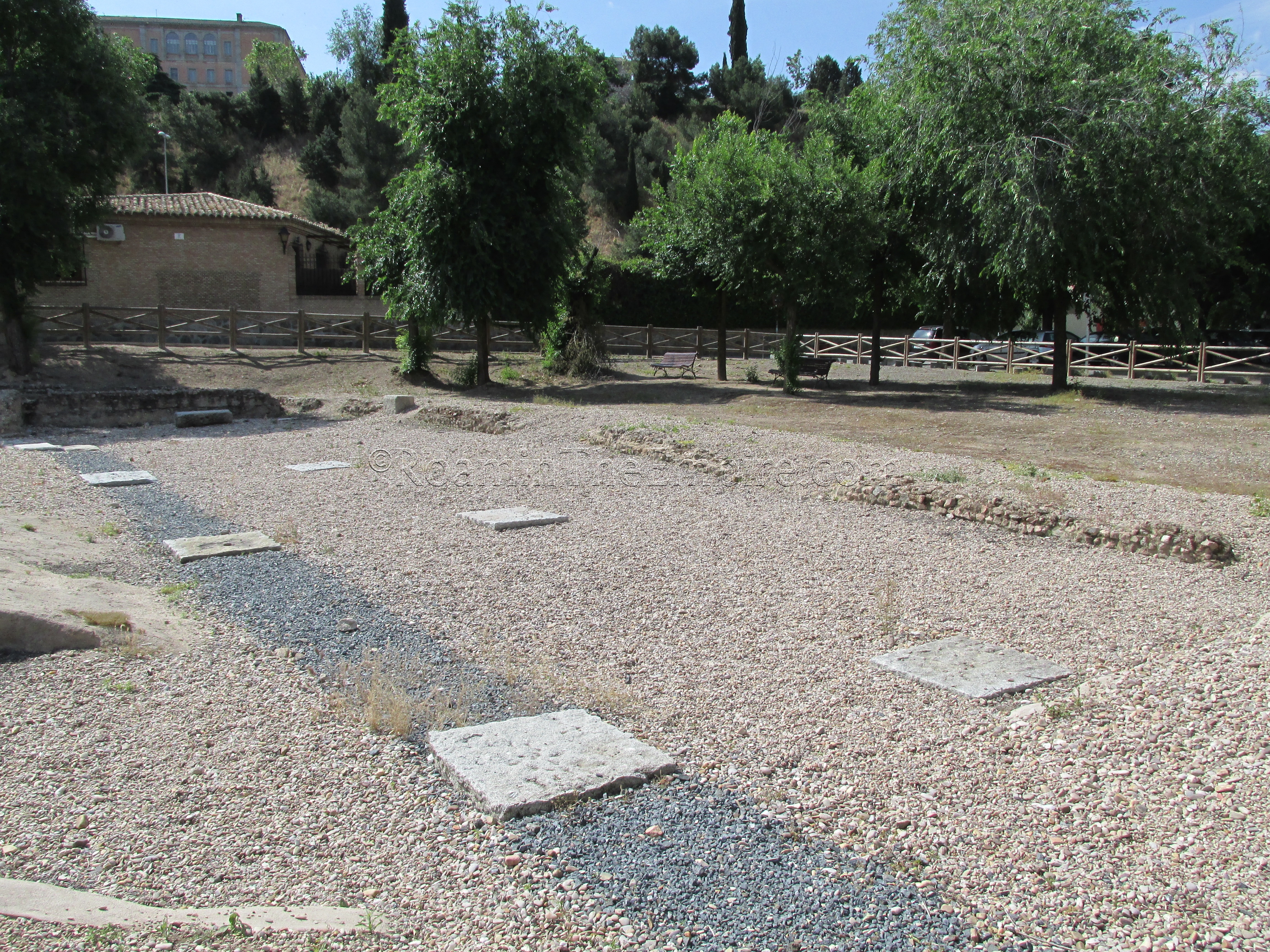
Outside of the park on the west side, across Av. de Carlos III (roughly to the southwest) some sparse remains of the southern part of the circus can to be traced in a separate park that runs along the south side of the aptly named Passeo Circo Romano. This park and portion of the circus run for about another 200 meters, and ends in the scant remains of the carceres of the circus. With this, the entire southern circuit of the structure can essentially be traced from one end to the other.
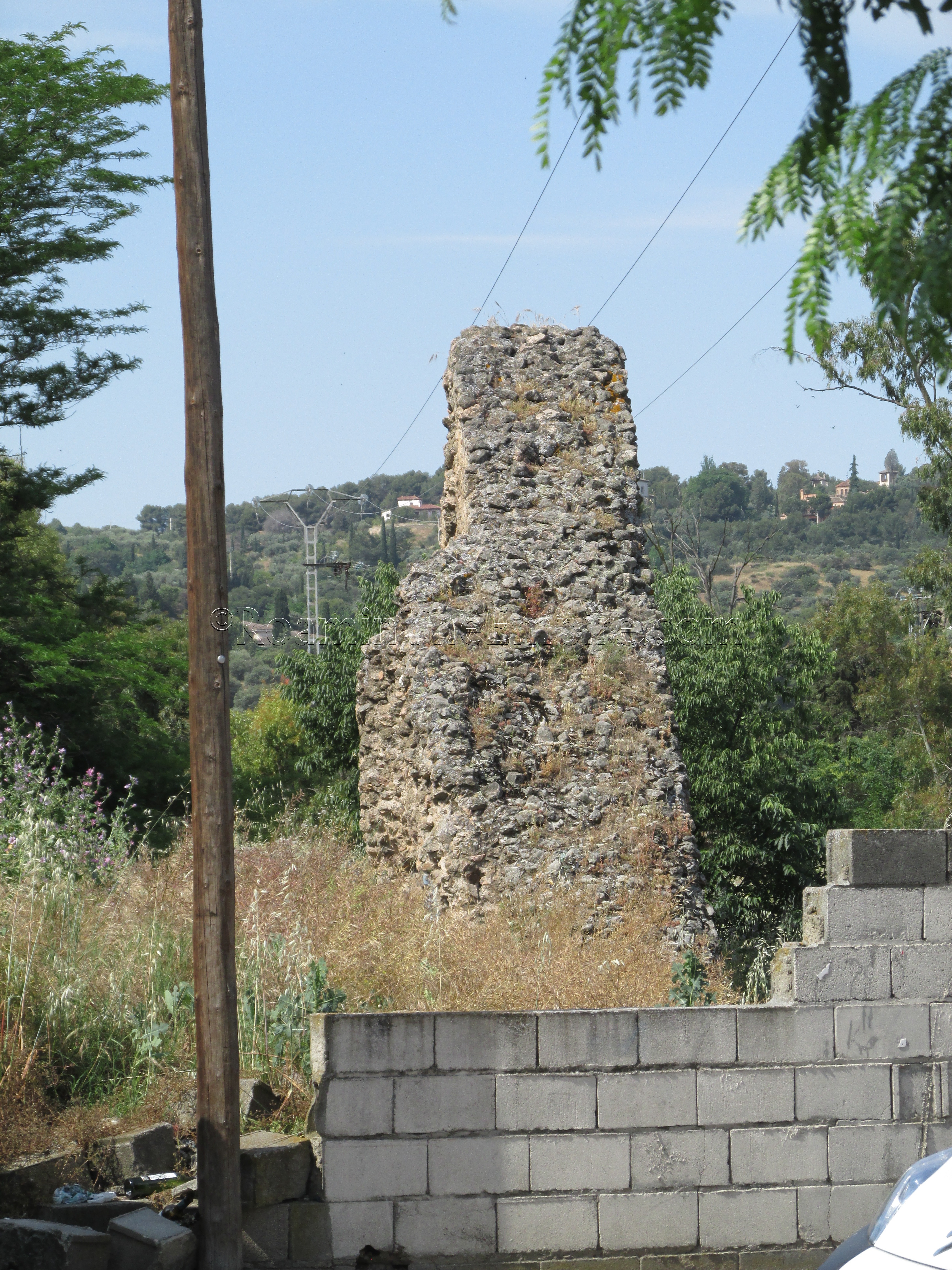
There is also a small portion from the northern wall of the circus on the west side of Av. de Carlos III. While not accessible, as it appears to be on private property, it is the tallest section of the circus remaining, and so it is easy to see when exiting the park with the eastern section of the circus.
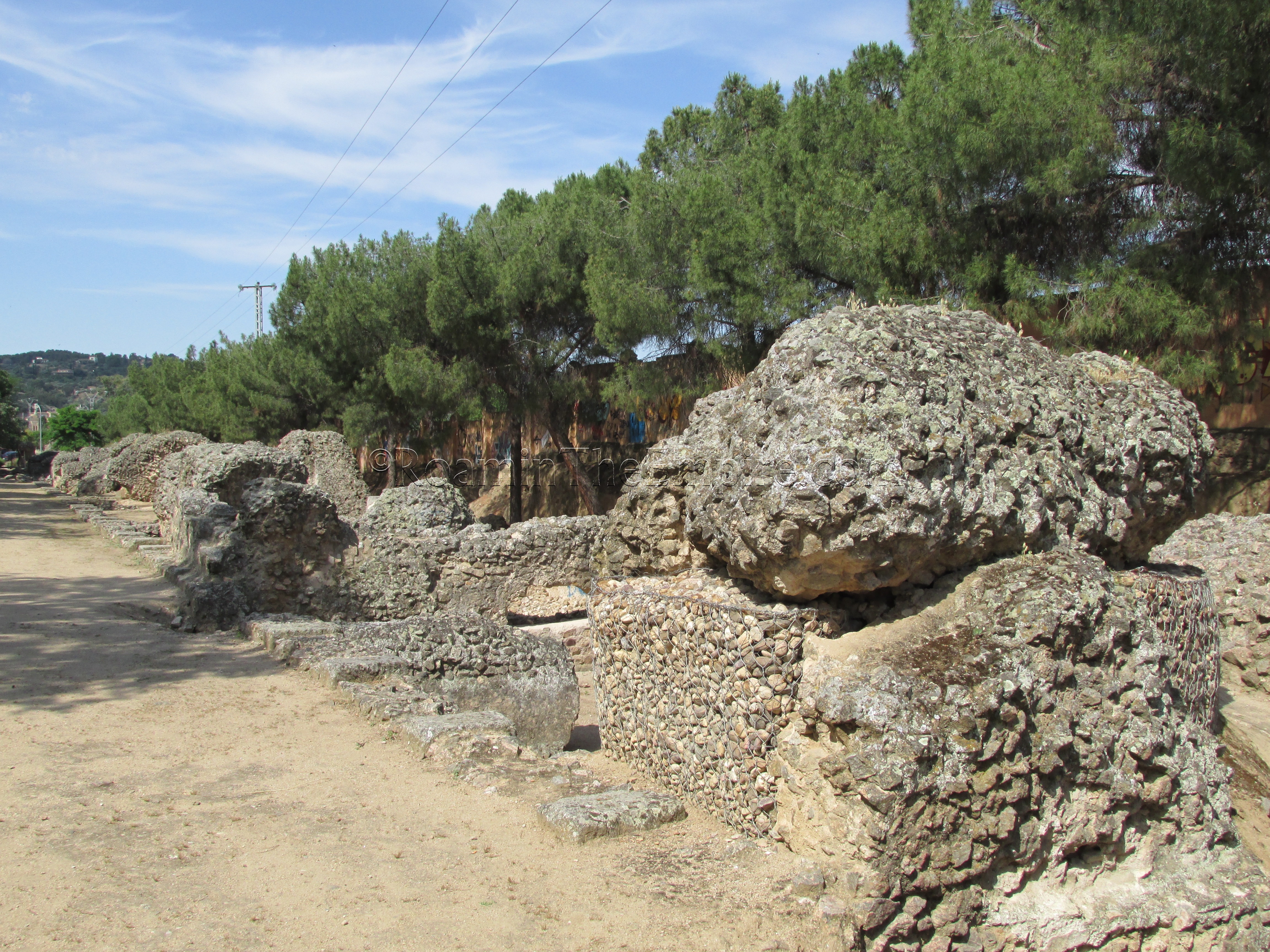
The circus was built towards the end of the 1st century CE and remained in use until the 4th century CE. The overall dimensions of the structure are 408 meters by 86.2 meters and is estimated to have had a capacity of about 13,000-15,000 spectators. After the 4th century CE, the circus was spoliated and then variously used as a cemetery and storage area. Later, in the 18th century, it was being used by squatters, resulting in some of the support vaults still existing at the time to be torn down in order to discourage the practice. There are a few signs throughout both parks with some explanation as to the layout of the circus, mostly in Spanish.
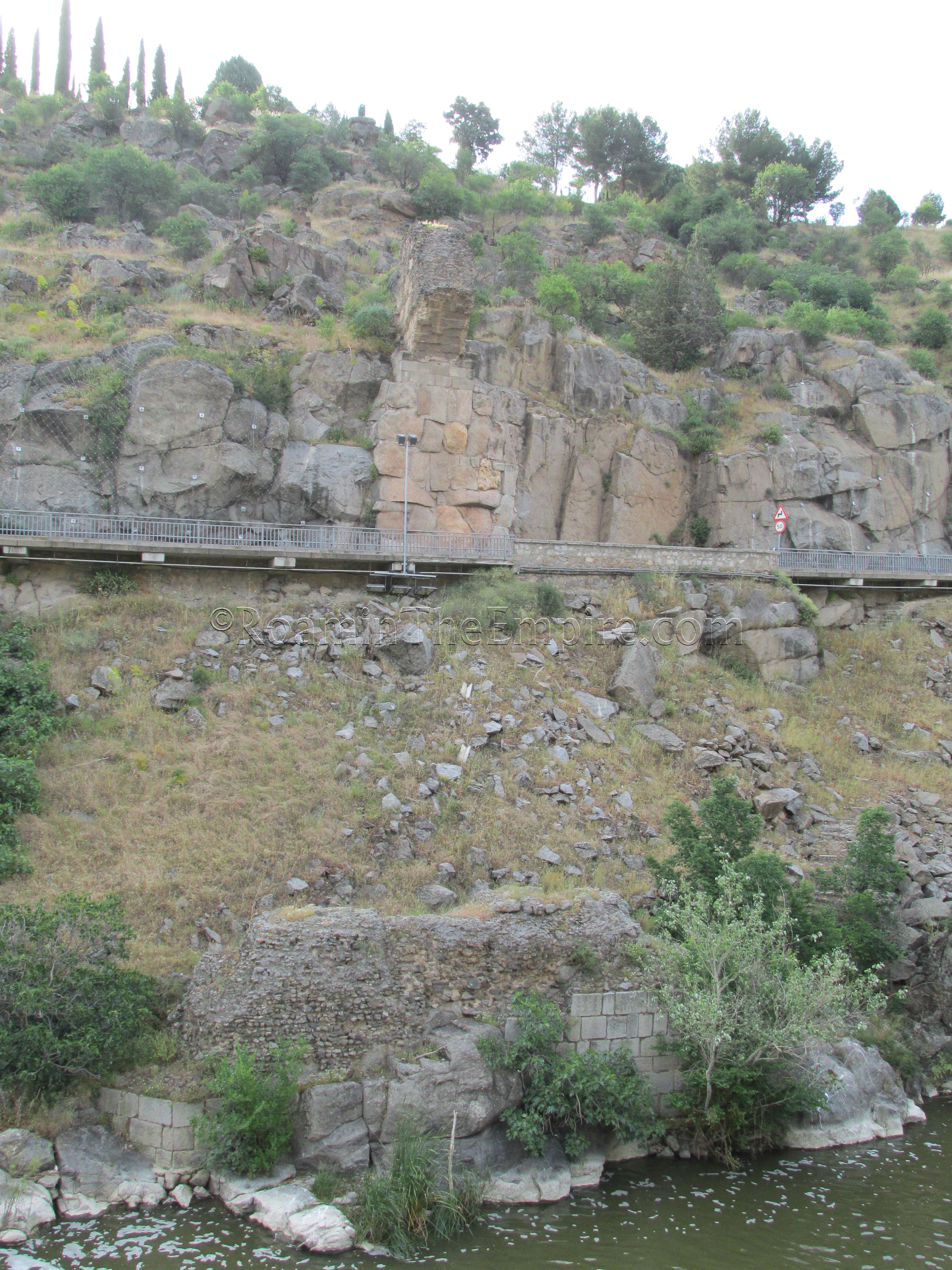
On a slightly different note, there are apparently some Roman vaults associated with hydraulic functions located south of Plaza Amador de los Rios at Calle Nuncio Viejo 19 that I was not able to visit and confirm. Not for lack of trying, though, as I did pass by several times to during the day to see if anything was open, to no avail. I suspect that one might have to make special arrangements/reservations through the Consorcio de Toledo to see these, if they are available to be seen at all.

While there is nothing spectacular remaining of Toletum in Toledo, it’s an overall nice day trip from Madrid, even aside from the Roman sights. It’s very touristy and there are lots of crowds around the Cathedral and Alcazar (particularly in the summer), but the Roman remains seem to be totally overlooked by most visitors. There is a local brewery with a vaguely Roman themed line of beers called Domus. Such offerings include Domus Aurea, Domus Summa, and Domus Regia, and these can be purchased at most stores in town, or there is a brewery east of town. Known for its metalworking, there are also a lot of metalwork shops that sell replica Roman weaponry and armor of varying degrees of quality and price.
Sources:
Curchin, Leonard A. Roman Spain: Conquest and Assimilation. New York: Routledge, 1991.
Livy, Ab Urbe Condita, 35.7.
Rubio Rivera, Rebecca. “Continuidad y Cambio En El Proceso De Romanización del Ámbito Celtibérico Meridoional y Carpetano.” Iberia E Italia: Modelos Romanos De Integración Territorial, Spain, Murcia. Proc. of Actas Del IV Congresso Hispano-Italiano Histórico-Arqueológico. Murcia, Spain: Tabvlarivm, 2008. 127-42.
Site placards.
Stillwell, Richard, William L. MacDonald, and Marian Holland. McAllister. The Princeton Encyclopedia of Classical Sites. Princeton, NJ: Princeton U Press, 1976.



